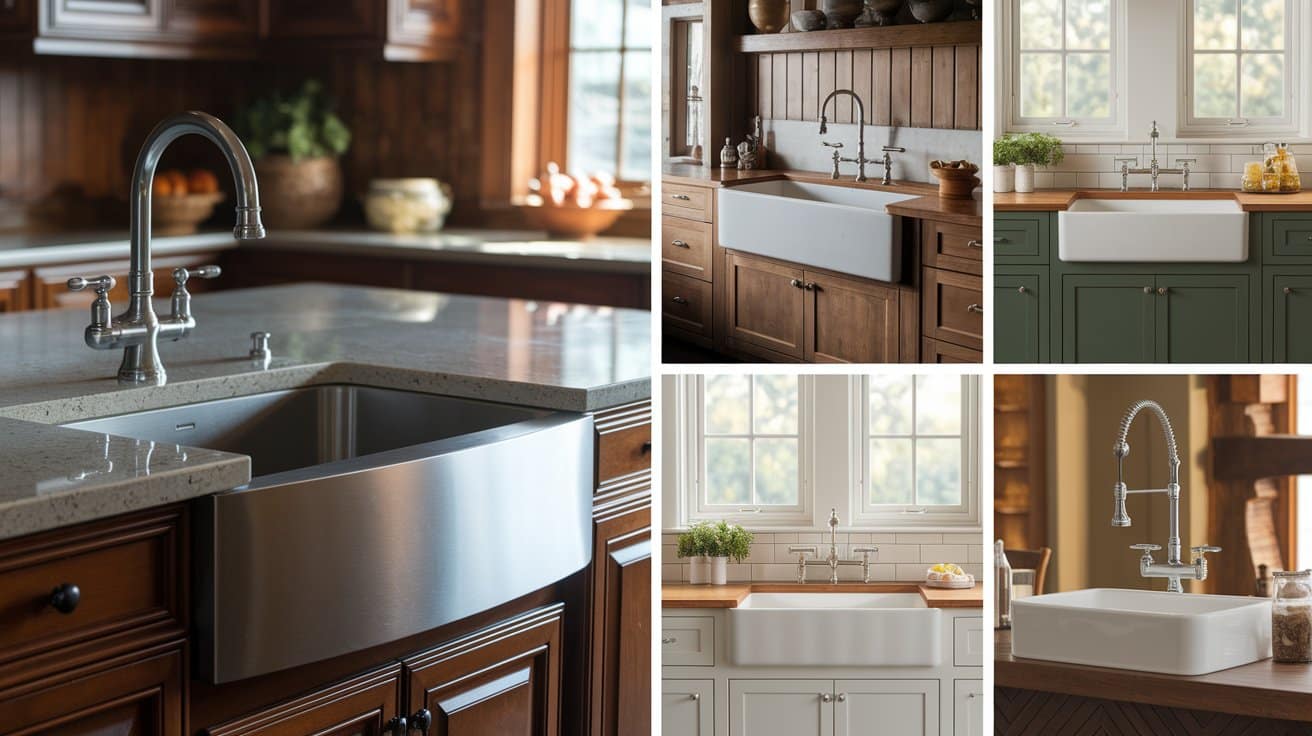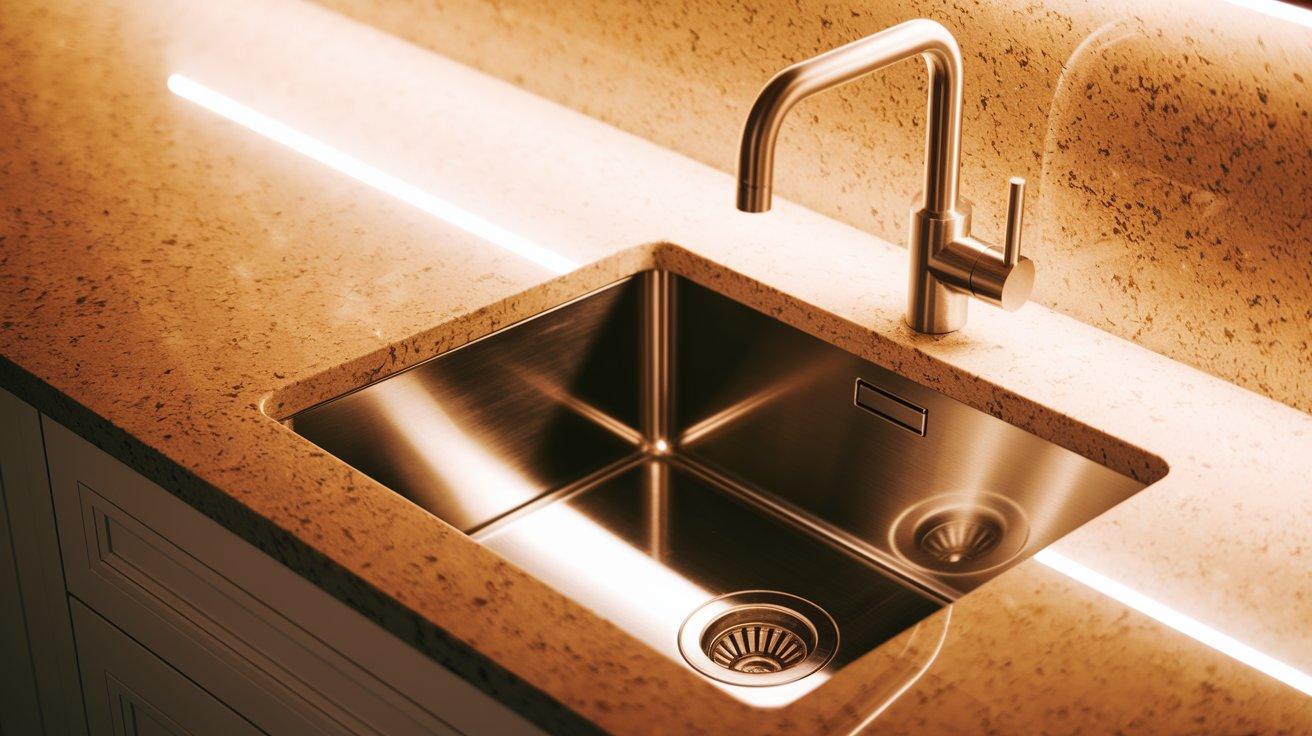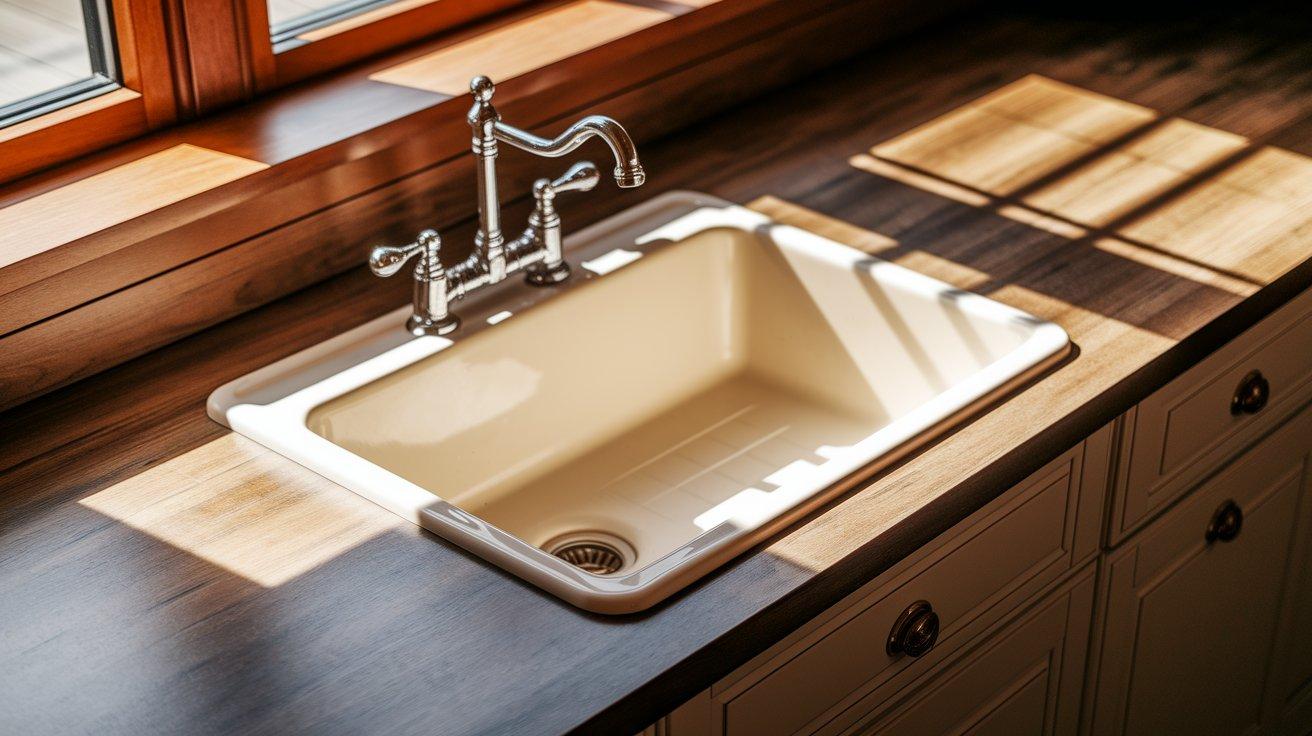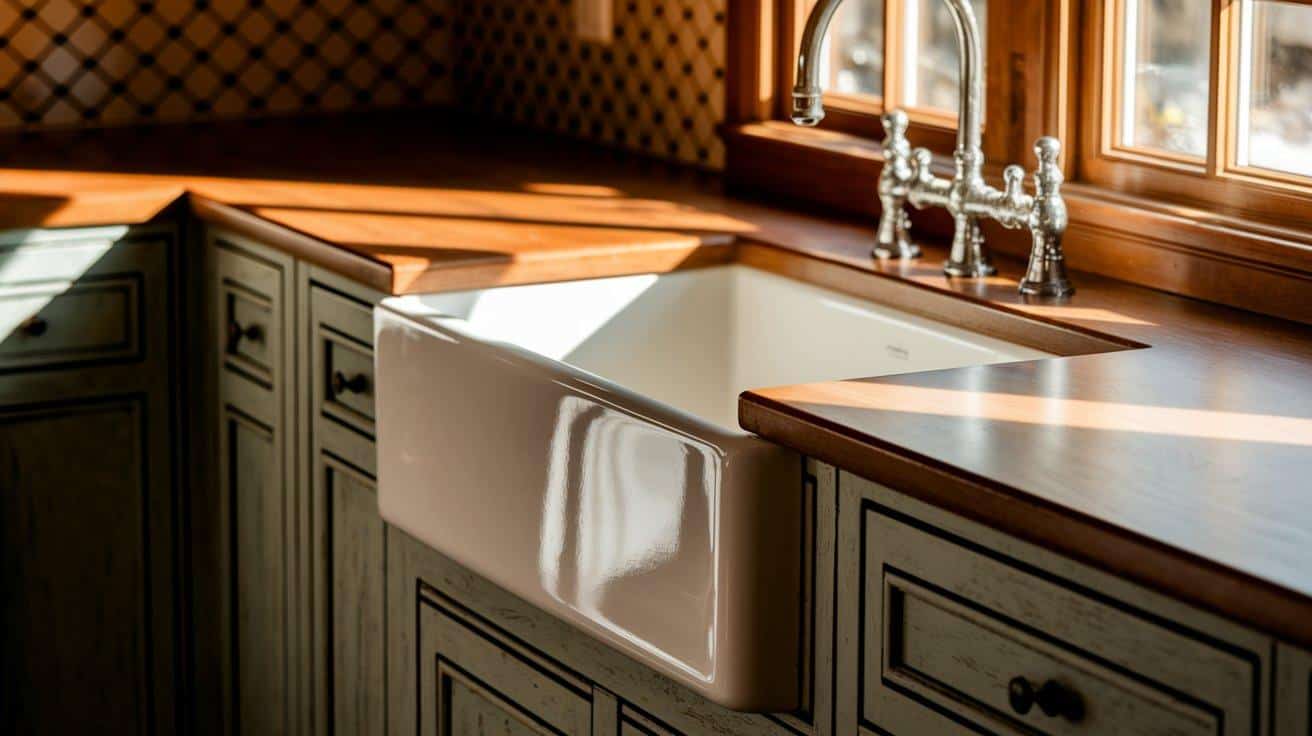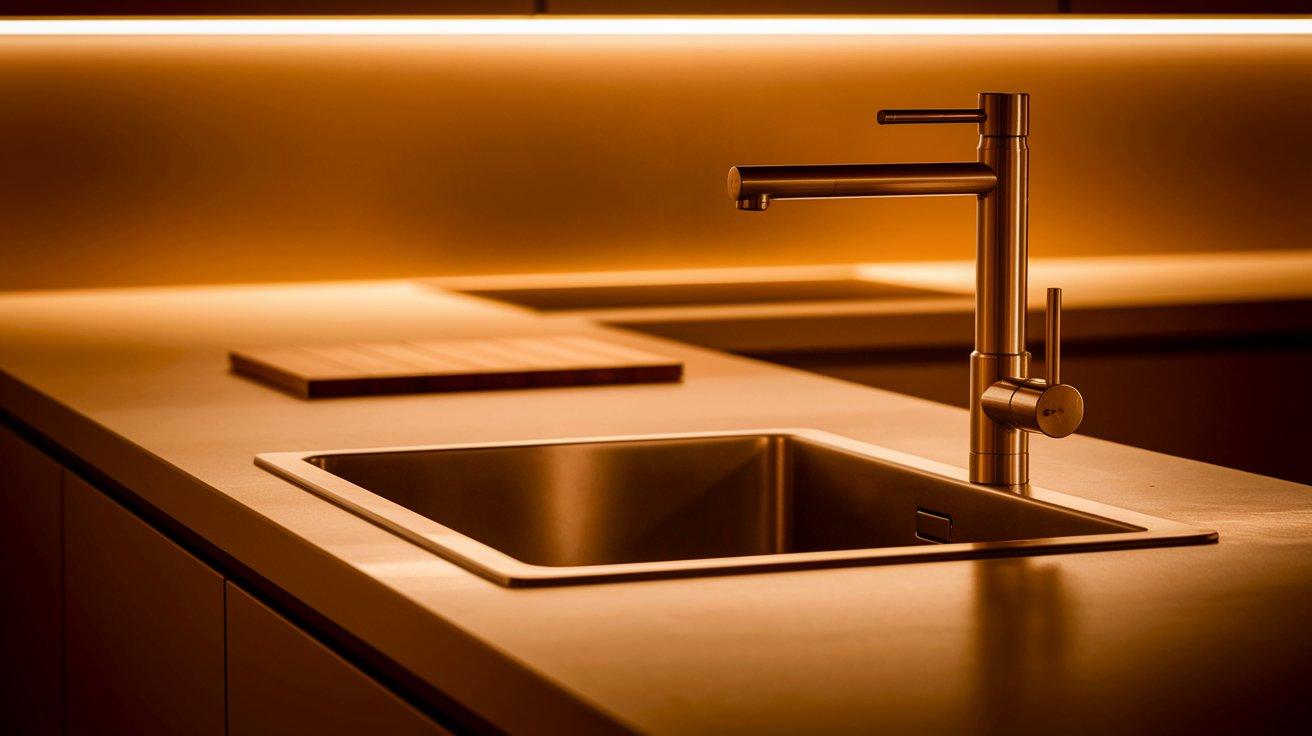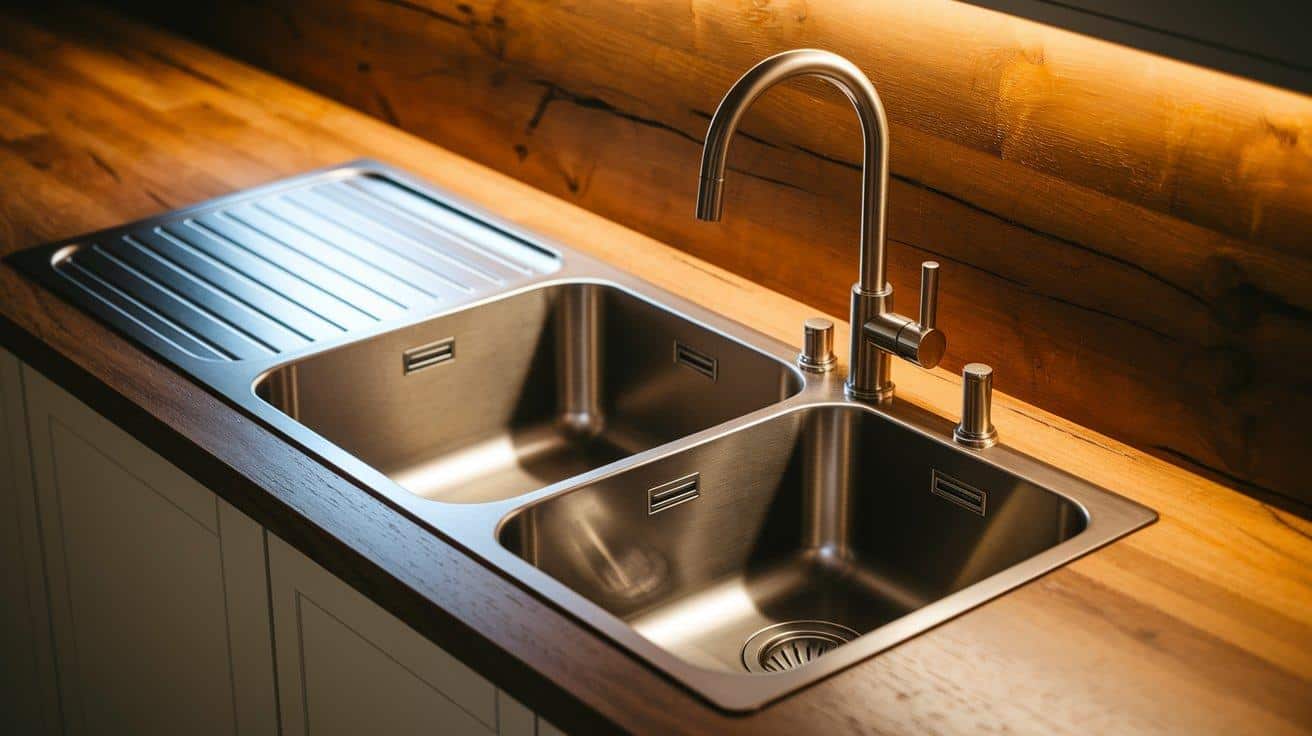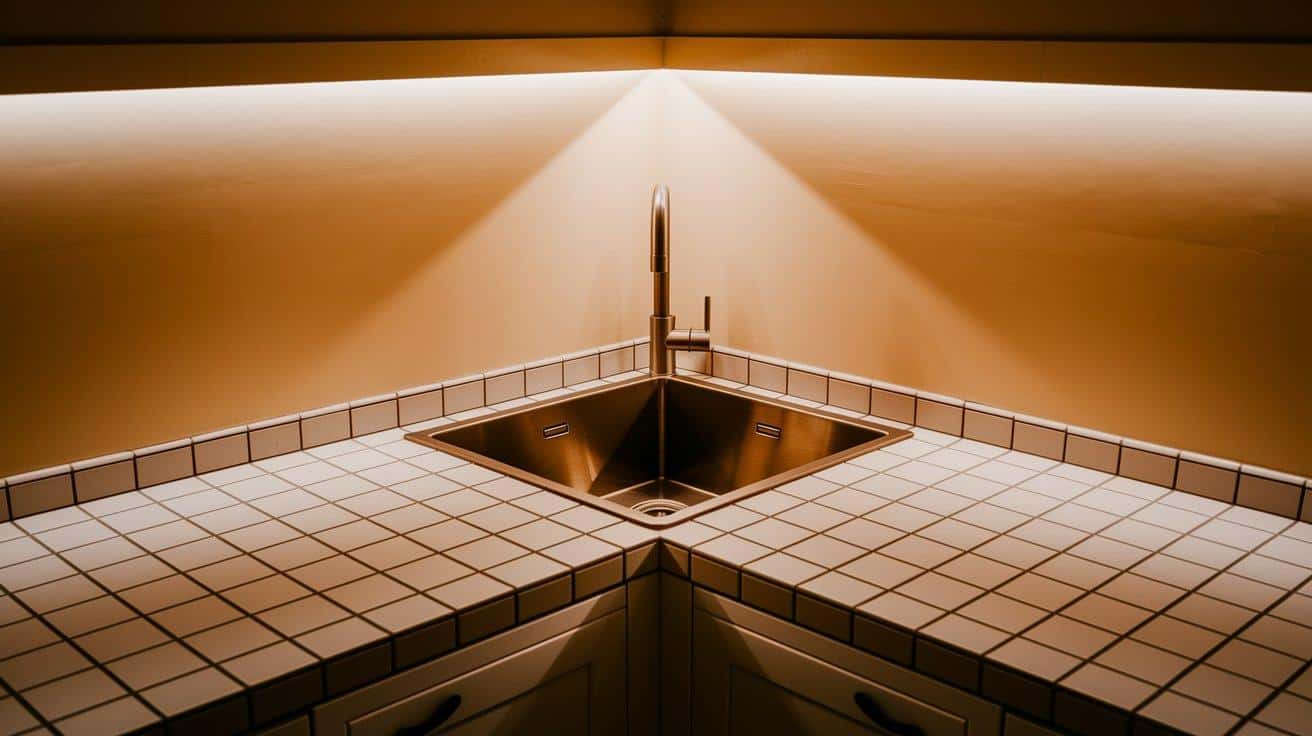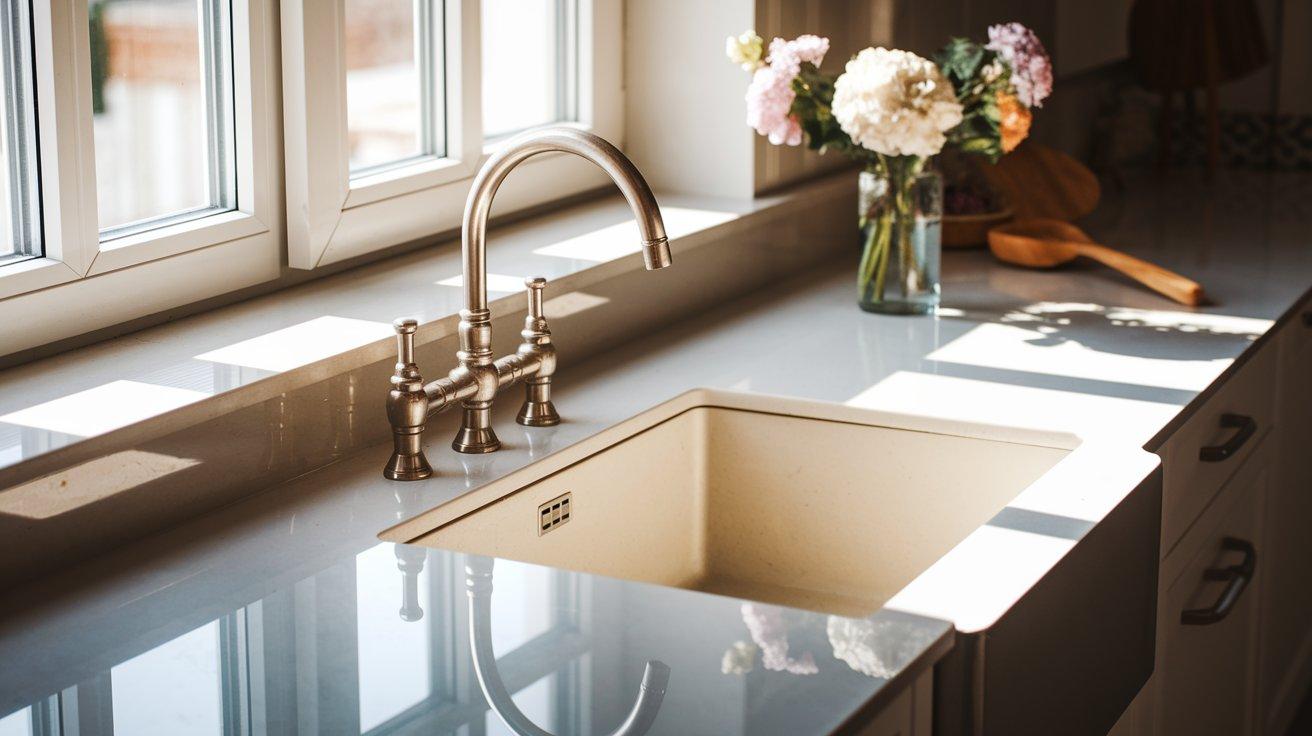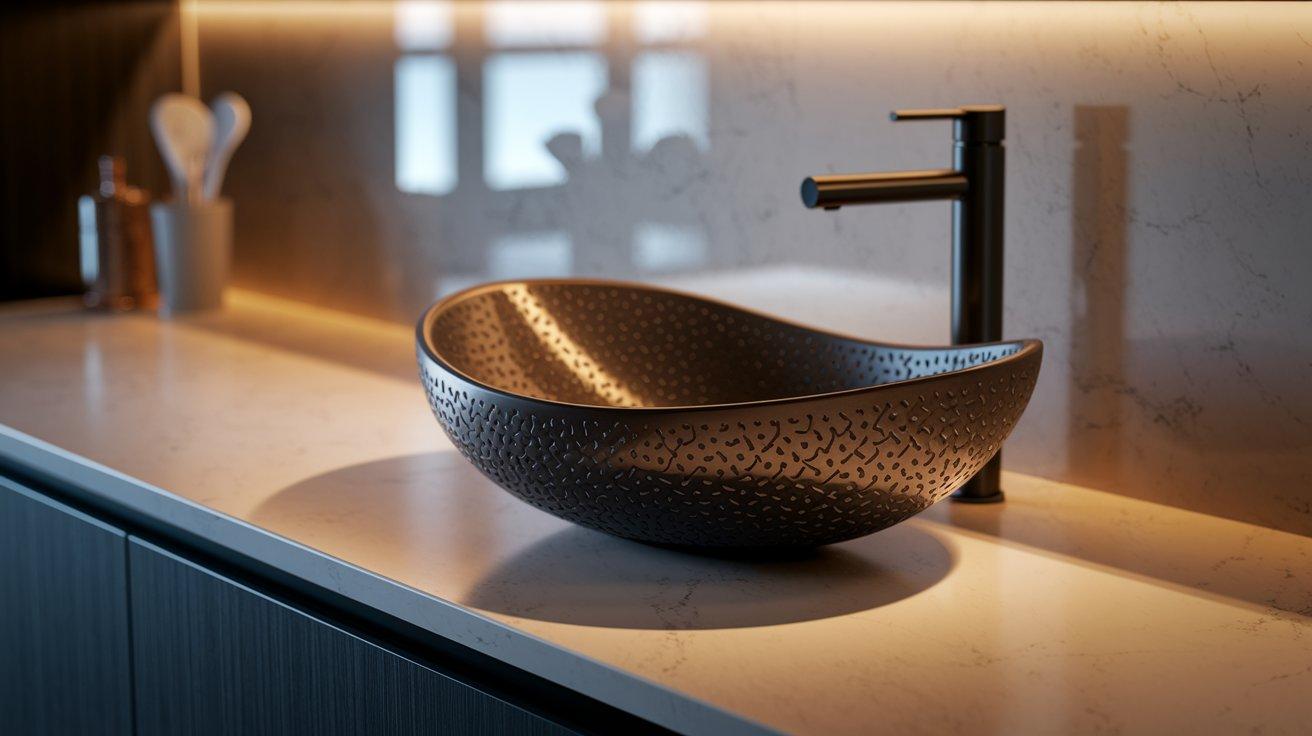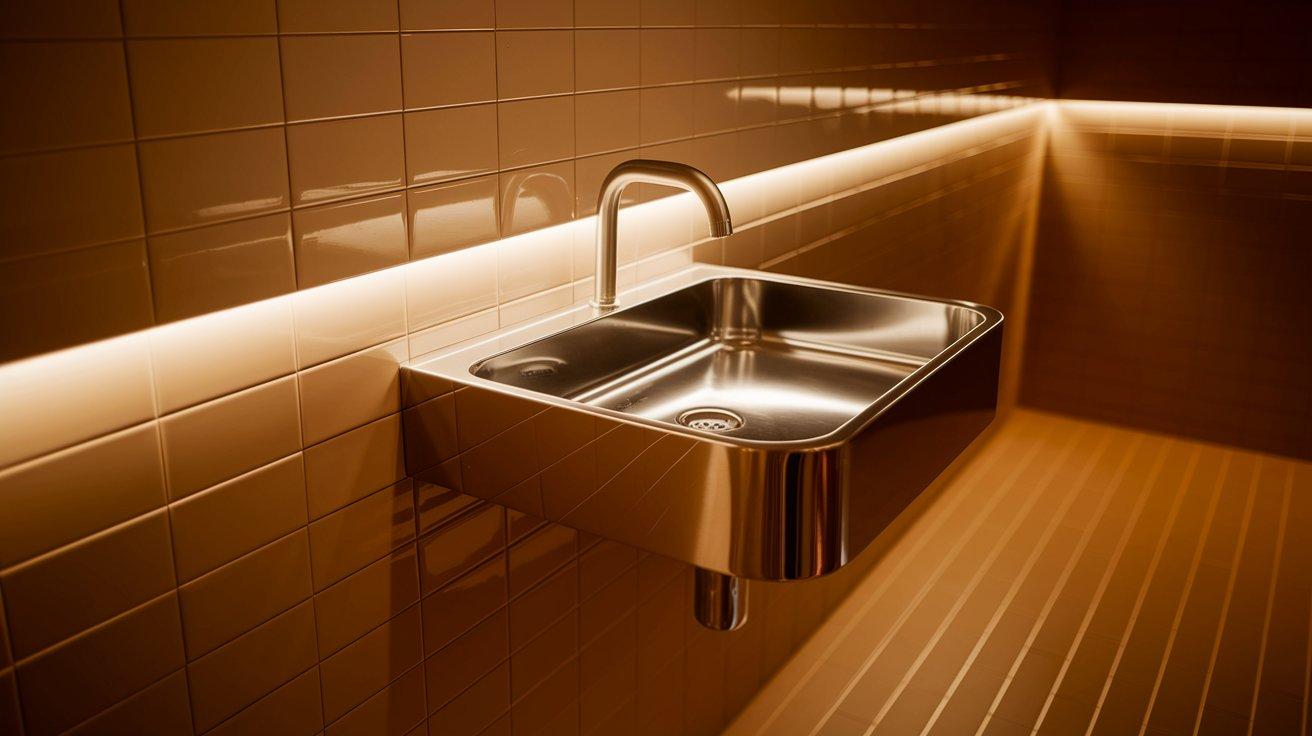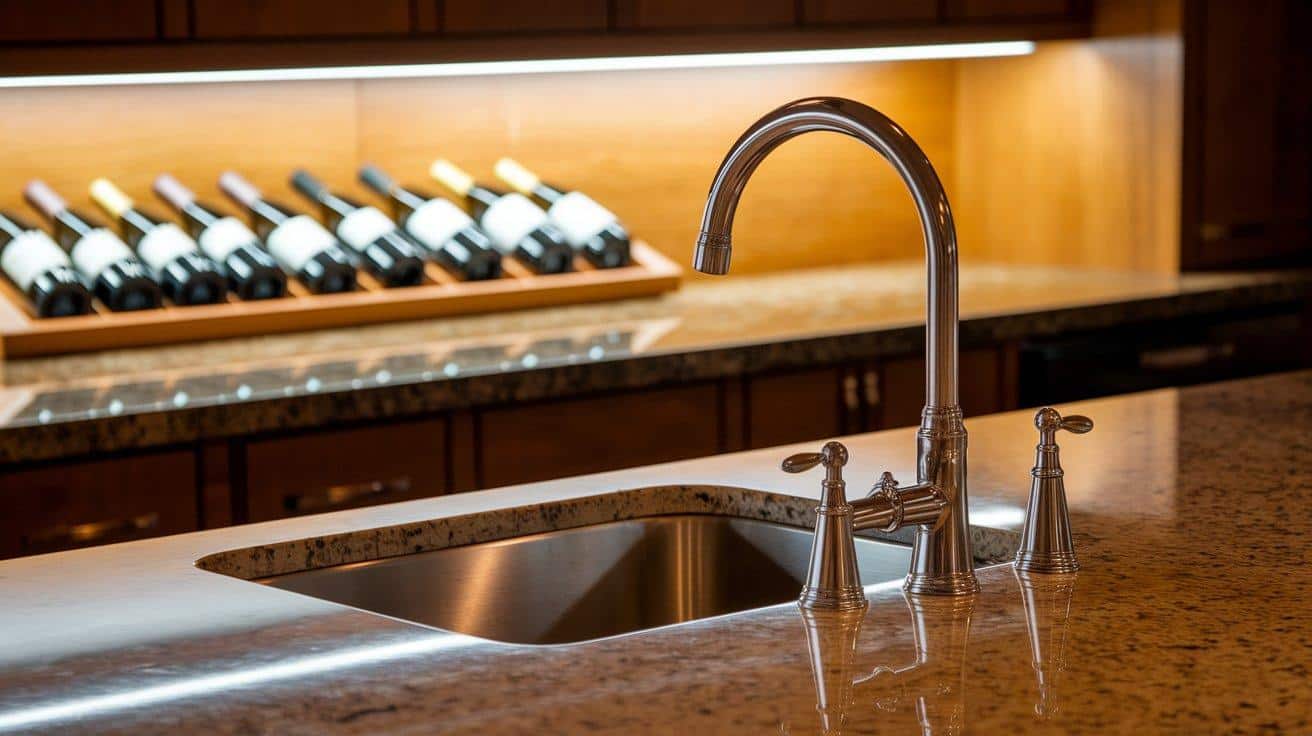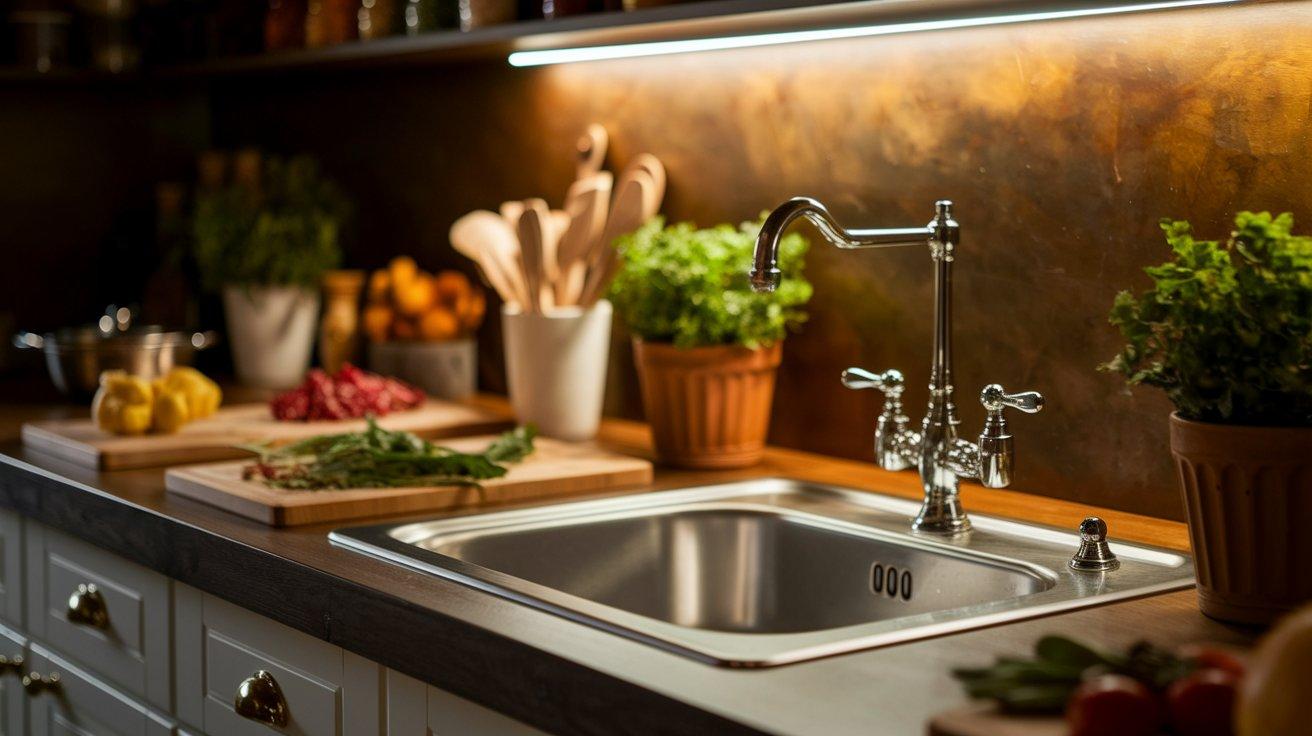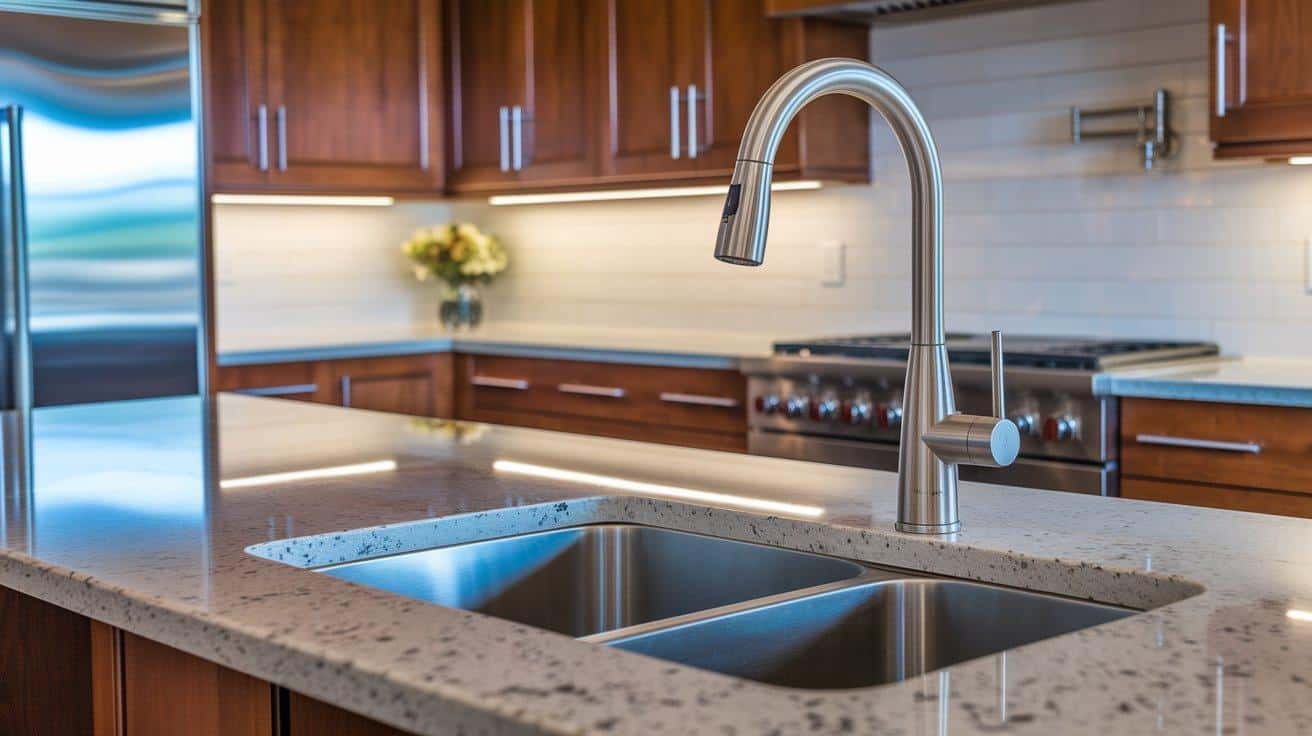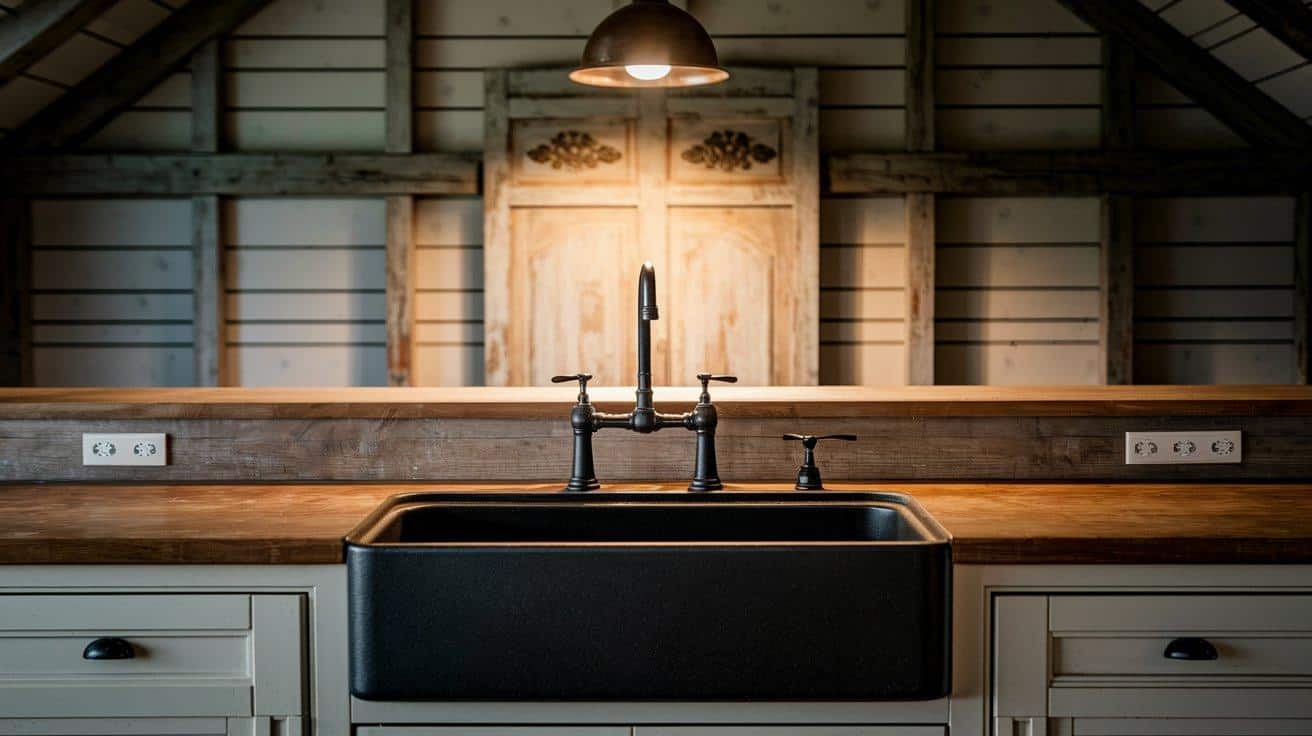Are you struggling to choose the right sink for your kitchen renovation? This common dilemma leaves many homeowners confused about which option works best for their needs.
Kitchen sinks come in various styles and configurations today. Each type offers unique benefits for different cooking habits and space requirements. Modern options range from classic farmhouse styles to sleek undermount designs.
The right sink choice affects both function and style in your kitchen. Poor selection can lead to daily frustration and reduced home value. Smart buyers research thoroughly before making this important investment.
This blog covers popular sink types with their features and benefits. You’ll learn key factors to consider when making your final decision.
Get ready to find the perfect kitchen upgrade that matches your lifestyle and budget.
13 Different Types of Sinks for Your Kitchen
The following sink types represent the most popular options available today. Each design offers unique advantages for different kitchen layouts and cooking habits.
1. Undermount Sink
Undermount sinks attach beneath the countertop for a clean, modern look. The rim sits below the counter surface, creating smooth lines. This design works best with solid surface countertops like granite or quartz.
Installation requires professional help due to the mounting complexity. The sink must be properly supported to prevent sagging over time. Sealing around edges prevents water damage to cabinets below.
- Pros: Easy counter cleanup, sleek appearance, maximizes counter space.
- Cons: Higher installation cost, requires solid countertops.
2. Top-Mount Sink
Top-mount sinks drop into a cutout with the rim resting on the counter. This traditional style works with any countertop material. Installation is simpler and more affordable than undermount options.
The visible rim creates a defined border around the sink area. Most homeowners can install these sinks without professional help. Standard sizes fit most existing cabinet openings.
- Pros: Easy installation, works with all countertops, and has a lower cost.
- Cons: Rim collects debris, and it’s harder to clean around the edges.
3. Farmhouse Sink (Apron Front)
Farmhouse sinks feature an exposed front panel that extends beyond the cabinet face. This style creates a focal point in traditional and rustic kitchens. The deep basin accommodates large pots and baking sheets easily.
Installation requires cabinet modifications to support the heavy weight. The apron front eliminates the need for a false drawer front. Most models come in white ceramic or stainless steel finishes.
- Pros: Large capacity, distinctive style, eliminates the need for a cabinet front.
- Cons: Requires cabinet modification, is more expensive, and has a higher weight.
4. Single Bowl Sink
Single bowl sinks provide one large washing area without dividers. This design maximizes usable space for oversized items. Large pots, baking sheets, and roasting pans fit comfortably inside.
The uninterrupted space allows for flexible use for different tasks. Washing large items becomes much easier without size restrictions. Single bowls work well in smaller kitchen layouts.
- Pros: Maximum washing space, accommodates large items, and offers flexible use.
- Cons: No separation between different tasks, limited multitasking capabilities.
5. Double Bowl Sink
Double bowl sinks feature two separate washing areas divided by a center wall. This design allows multitasking during food preparation and cleanup. One side can hold dirty dishes while the other stays clean.
Bowl sizes may be equal or different depending on your needs. Offset designs provide one large and one small bowl. The divider prevents cross-contamination between tasks.
- Pros: Multitasking capability, task separation, and prevention of cross-contamination.
- Cons: Smaller individual bowls, won’t fit very large items.
6. Corner Sink
Corner sinks fit into kitchen corners to maximize space efficiency. These triangular or angled designs work well in small kitchens. The placement opens up valuable counter space along straight walls.
Installation requires special corner cabinets and plumbing modifications. Access to plumbing connections may be limited in corner locations. Most models feature single or double bowl configurations.
- Pros: Maximizes corner space, opens wall counter area, and has a unique design.
- Cons: Limited size options, complex installation, restricted access.
7. Integrated Sink
Integrated sinks form one continuous piece with the countertop material. This seamless design eliminates joints where bacteria can grow. Solid surface materials like Corian allow this construction method.
The sink and counter are cured together during manufacturing. No separate installation is needed since everything arrives as one unit. Repairs may require replacing the entire countertop section.
- Pros: Seamless design, no joints for bacteria, easy cleaning.
- Cons: Limited material options, expensive repairs, and higher cost.
8. Vessel Sink
Vessel sinks sit on top of the counter like a decorative bowl. This style works better in bathrooms, but some kitchen applications exist. The sink becomes a design statement in the room.
Installation requires cutting a small drain hole in the countertop. The faucet mounts separately on the counter or wall. Height considerations affect user comfort during extended use.
- Pros: Distinctive appearance, easy installation, and design focal point.
- Cons: Height issues, limited kitchen practicality, and cleaning challenges.
9. Wall-Mount Sink
Wall-mount sinks attach directly to the wall without cabinet support. This style works well in utility rooms and compact spaces. The open area below provides easy floor cleaning access.
Strong wall framing is required to support the sink’s weight. Plumbing lines run through the wall to hidden connections. This option works best for light-duty washing tasks.
- Pros: Space saving, easy floor cleaning, simple installation.
- Cons: Limited storage, requires wall reinforcement, minimal counter space.
10. Bar Sink
Bar sinks provide a secondary washing station for entertaining areas. These compact units handle drink preparation and light cleanup tasks. Installation works well in kitchen islands or wet bar locations.
Small size limits functionality to basic washing needs. Most models feature single bowl designs with standard plumbing connections. The compact footprint fits into tight spaces easily.
- Pros: Secondary washing station, compact size, entertainment-friendly.
- Cons: Limited capacity, single-purpose use, additional plumbing required.
11. Prep Sink
Prep sinks serve as dedicated food preparation stations in large kitchens. These secondary sinks handle vegetable washing and ingredient prep work. Professional kitchens often include multiple prep areas.
Size typically ranges from 12-18 inches for basic functionality. Installation near cooking areas improves workflow efficiency. Some models include integrated cutting boards or colanders.
- Pros: Dedicated prep area, improves workflow, keeps the main sink clean.
- Cons: Additional cost, requires extra plumbing, takes counter space.
12. Granite Composite Sink
Granite composite sinks blend natural stone with resin binders. This material resists heat, scratches, and stains better than traditional options. Color choices match granite countertops for coordinated looks.
The non-porous surface prevents bacterial growth and odor retention. Installation follows standard undermount or top-mount methods. Regular cleaning maintains the original appearance over time.
- Pros: Heat resistant, scratch resistant, color variety available.
- Cons: Higher cost, can chip if impacted, requires special cleaners.
13. Cast Iron Sink
Cast iron sinks feature porcelain enamel coating over heavy metal construction. This traditional material provides excellent durability and heat retention. Vintage and reproduction styles suit period kitchen designs.
The heavyweight requires strong cabinet support during installation. Enamel surfaces can chip if struck by heavy objects. Color options include white, black, and various pastels.
- Pros: Extremely durable, heat retention, classic appearance.
- Cons: Very heavy, can chip, requires careful handling.
What to Consider When Selecting the Perfect Sink?
Choosing a kitchen sink involves more than picking a pretty design. The right sink must match your cooking style and kitchen workflow. Poor choices lead to years of daily frustration.
Several factors determine which sink works best for your space. Smart shoppers evaluate these elements before making their final decision.
Key Factors to Consider:
- Size and Depth – Measure your cabinet space first. Deep sinks handle large pots better, but may strain your back.
- Material Durability – Stainless steel resists stains and scratches. Granite composite offers heat resistance and color variety.
- Installation Type – Undermount sinks create clean lines. Top-mount options cost less and install more easily.
- Bowl Configuration – Single bowls accommodate large items. Double bowls allow multitasking during food prep.
- Maintenance Requirements – Some materials need special cleaners. Others resist water spots and fingerprints naturally.
- Budget Constraints – Basic models start around $100. Premium options can exceed $1,000 with installation costs.
- Faucet Compatibility – Check hole requirements before purchasing. Some sinks include pre-drilled faucet holes.
Conclusion
Selecting the right kitchen sink depends on your specific needs and layout requirements. Each sink type offers distinct advantages for different cooking styles and space constraints.
The best sink choice balances functionality with visual appeal in your kitchen design. Installation requirements and maintenance needs also play important roles in long-term satisfaction.
Quality materials and proper installation ensure your sink lasts for decades. Budget considerations affect your final selection, but shouldn’t compromise essential features.
Remember that investing in the right type now saves money and frustration later. Your kitchen deserves the perfect sink solution for daily use.
What type of sink appeals most to your kitchen needs? Share your thoughts and experiences in the comments below.
Frequently Asked Questions
What Is the Easiest Sink to Keep Clean?
Stainless steel sinks require only soap and warm water for maintenance. Composite granite materials resist scratches, stains, and heat damage while staying newer-looking longer.
What Is the Trend in Kitchen Sinks?
Current trends include workstation sinks, farmhouse designs, low divide double bowls, and oversized single bowls. Composite materials and bold finishes gain popularity alongside stainless steel.
What Kind of Kitchen Sink Lasts the Longest?
Cast iron sinks offer the best durability and the heaviest construction. Enameled surfaces resist damage but need silicone mats to prevent scratches from heavy cookware.

